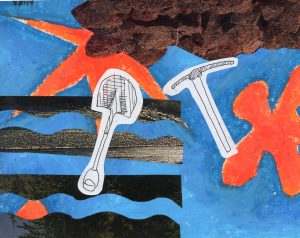13 Winifred Caywood (she/her)
By Angelina Boroyan (she/her)

Winifred Caywood, an archaeologist, helped excavate a trash pit in 1950 which was found and used for visiting the national park service officials. She had some help, and in total this resulted in more than two pickup truckloads of boxes with artifacts. My goal with this project is to show how she pursued archeology and how her work has affected the Northwest and our day to day living, to understand her own history; education, and work history. To better understand archaeology, Caywood must be understood first.
The findings from the trash pit excavated by Caywood and her team at Fort Vancouver, provide valuable insights into the daily lives of the people who inhabited the Fort during the 19th century. Trash pits, often referred to as ‘middens,’ were common features in historical sites, as they were used as convenient disposal areas for a wide range of discarded items.
Caywood opened up the first of many eye opening experiences for men as well as women. This not only shocked the entire Pacific Northwest as it did affect all the women across the region, leaving them inspired and motivated. Caywood has made a large effect on the environment, helping archaeologists uncover history with a better sense of understanding of the story underneath the layers of where we live. She found various fragments of ceramics, such as plates, bowls, and cups, as well as glass bottles and jars, which would likely have been abundant in the trash pit. These items can provide information about the types of dishes used for dining and storage, as well as the origins of imported goods. She was also able to find food remains which could offer insights into dietary habits and food mannerisms of the inhabitants of Fort Vancouver. These included animal bones, shells, seeds and other organic materials. Analysis of the remains may reveal information about the types of animals consumed, cooking methods and access to resources.
Caywood’s most substantial finding includes architectural debris. Some fragments of building materials, such as brick, mortar, and wood, would have been present in the trash pit. These materials can show us how construction techniques, building maintenance, and changes in architectural styles have changed over time.
Caywood’s analysis and interpretation of these artifacts have enabled archaeologists to reconstruct various aspects of daily life, social practices, economic activities and cultural interactions at Fort Vancouver. Her work on the findings from the trash pit has significantly contributed to a broader understanding of the historical context of the fort and its importance within the Pacific Northwest region. Through Caywood’s efforts, the spotlight has shifted to her contributions and history, allowing recognition of her individual achievements rather than solely her association with her husband.

